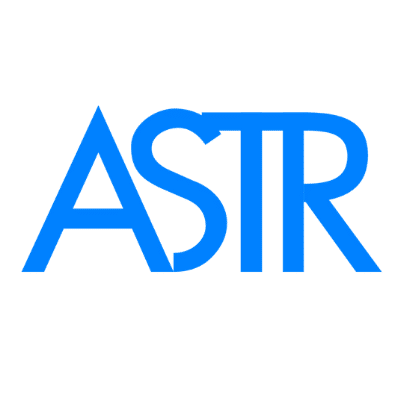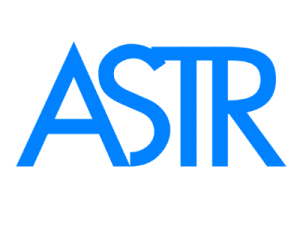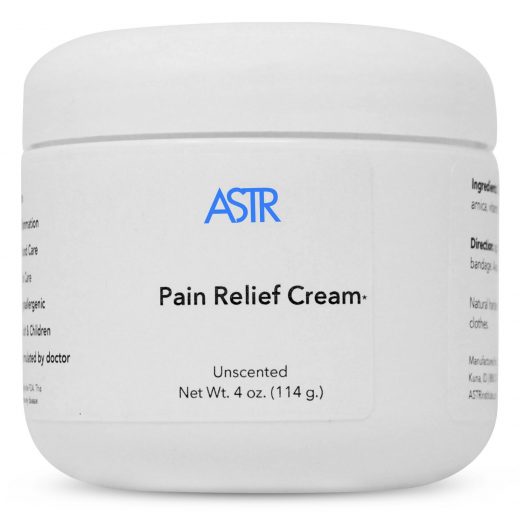Myofascial Pain Syndrome: Symptoms, Causes, Functions, Layers, Healing Cycle & Treatment
Myofascial Pain Syndrome: Symptoms, Causes, Functions, Layers, Healing Cycle & Treatment

Was ist das myofasziale Schmerzsyndrom?
Das myofasziale Schmerzsyndrom ist eine chronische Schmerzerkrankung. In diesem Zustand verursacht Druck auf sensible Punkte in Ihren Muskeln (Triggerpunkte) Schmerzen in den Muskeln und manchmal in scheinbar nicht damit zusammenhängenden Teilen des Körpers, und dies wird als Schmerz bezeichnet. Myofasziale Schmerzen können sich in jedem Muskel des Körpers entwickeln. Die am häufigsten betroffenen Muskeln sind der obere Rücken, die Schultern und der Nacken [1].
Normaler Heilungszyklus
The normal Healing cycle is divided into the following stages that are inflammation, proliferation, and maturation stage.
- The first stage is the inflammation stage which is followed by redness, temperature, swelling, and increased pain. This stage is important as swelling prevents the nearby tissues from being damaged, increased temperature causes the disposal of pathogens and it also alerts the white blood cells to start the healing cycle.
- Then the second stage is the proliferation stage in which the affected area starts the formation of scar tissues, which is important to continue the healing cycle.
- The third and final one is the maturation stage in which the scar tissue is replaced by normal skin cells and the completion of the normal healing cycle occurs [2].
What is Fascia?
Fascia is connective tissue layers that support, wrap and surround all organs, bones, blood vessels, and nerves. Fascia helps in functional movements by reducing friction between the structures. Fascia has nerves that make it as sensitive as skin. It is the very thin layer under the skin that protects and separates the body [3].
Functions of Fascia
Functions of fascia are as follows:
- It separates the muscles from bones and other organs from each other.
- Secondly, it supports the body to be in a certain position and attains the vital organs to be in shape.
- Moreover, it protects the body by resisting mechanical stress internally and externally [3].
Fascia layers
Layers of fascia are as follows:
1. Superficial fascia:
Superficial fascia is the lowermost layer of the skin in nearly all of the regions of the body, that blends with the reticular dermis layer. It consists mainly of loose areolar, and fatty adipose connective tissue and is the layer that primarily determines the shape of a body. It separates the skin from the musculoskeletal system allowing normal sliding and gliding in the muscles [3].
2. Deep fascia:
A deep fascia is a dense connective tissue that is commonly arranged in sheets that form a stocking around the muscles and tendons beneath the superficial fascia. The deep fascia consists of four layers.
- The first one is the aponeurotic fascia that surrounds the group of muscles. It consists of two to three layers of collagen fibers and its function is that it connects the muscles with their movers. An example of this fascia is palm aponeurosis.
- The second one is the epimysium fascia that surrounds the entire muscles. It covers one layer of the muscles.
- The third one is perimysium fascia. It is the bundle of fibers inside the muscles which is surrounded by epimysium fascia.
- The last one is the endomysium fascia layer that surrounds or wraps each fiber [3].
What causes fascia restrictions?
Fascial restrictions can be caused by scar tissue, injuries, repetitive motion, stress, surgery, bad posture, bad body mechanics, trauma, disease, inactivity, and inflammation. These restrictions can change your body alignment, posture, and range of motion [4].
Symptome des myofaszialen Schmerzsyndroms
The symptoms of fascia restrictions include headache, pain, and pressure throughout the body, decrease flexibility, decreased range of motion, joint pain, joint stiffness, muscle weakness [4].
- Muskelschmerzen
- Muskelschwäche
- Verringern Sie den Bewegungsbereich der Gelenke
- Gelenksteife
- Schmerzhafte Muskelknoten
- Straffe, fadenförmige Bänder im Muskel
- Schlafstörung
Which patients have fascia restrictions?
Patients having the following disease have fascia restrictions:
- A patient who has tendonitis, which is the inflammation in the tendons, will have fascia restrictions.
- A patient who has shoulder bursitis, which is swelling and redness between the top of the arm bone and the tip of the shoulder, will have fascia restrictions.
- Patients having arthritis, which is the tenderness of joints, will have fascia restrictions.
- The person having shoulder impingement in which the tendons of the rotator’s cuff of the shoulder are pinched will have fascia restrictions.
- Moreover, the person having fibrosis, neck pain and shoulder pain will have fascia restrictions [4].
Current treatments for Myofascial Pain Syndrome
Current treatments for myofascial pain is based on massage therapy. Massage of fascia can be of two types which are described as follows:
Superficial fascia: Superficial fascia is the lowermost layer of the skin in nearly all of the regions of the body that blends with the reticular dermis layer. It consists mainly of loose areolar, and fatty adipose connective tissue and is the layer that primarily determines the shape of a body. It separates the skin from the musculoskeletal system allowing normal sliding and gliding in the muscles [5].
Deep fascia: Deep fascia is a dense connective tissue that is commonly arranged in sheets that form a stocking around the muscles and tendons beneath the current treatment for myofascial pain but it is said that no evidence shows that shows massage therapy is much effective in improving functional status related to neck and shoulders pain. The second one is a self-myofascial release (SMR) but it is said that there is conflicting evidence whether self-myofascial release can improve flexibility long term [5].
What is the solution?
To treat myofascial pain, ASTR-Instrumente are properly designed by the therapist to reduce the pain because it was impossible to release and detect it by only by hand [6].
Fazit
Myofascial pain syndrome is a chronic pain disorder. In this condition, pressure on the sensitive points in your muscles (trigger points) causes pain in the muscles, which is treated by the therapist by using ASTR-Instrumente. Myofascial pain is a chronic pain disorder. In this condition, pressure on sensitive points in the muscles (trigger points) causes pain in the muscles, which is treated by the therapist by using ASTR instruments.
Verweise
- Fricton J. Myofaszialer Schmerz: Mechanismen zur Behandlung. Kliniken für Mund-, Kiefer- und Gesichtschirurgie. 1. August 2016;28(3):289-311. https://pubmed.ncbi.nlm.nih.gov/27475508/
- Aredo JV, Heyrana KJ, Karp BI, Shah JP, Stratton P. Zusammenhang von chronischen Beckenschmerzen und Endometriose mit Anzeichen von Sensibilisierung und myofaszialen Schmerzen und Funktionsstörungen. InSeminare in Reproduktionsmedizin 2017 Jan (Bd. 35, Nr. 01, S. 088-097). Thieme Medizinischer Verlag. https://pubmed.ncbi.nlm.nih.gov/28049214/
- Capo-Juan MA. Zervikales myofasziales Schmerzsyndrom. Narrativer Überblick über die physiotherapeutische Behandlung. In Anales del sistema sanitario de Navarra 1. Januar 2015 (Bd. 38, Nr. 1, S. 105-115). https://pubmed.ncbi.nlm.nih.gov/25963463/
- Miernik M, Wieckiewicz M, Paradowska A, Wieckiewicz W. Massagetherapie in der myofaszialen TMD-Schmerzbehandlung. Fortschritte in der klinischen und experimentellen Medizin: offizielles Organ Wroclaw Medical University. 1. September 2012;21(5):681-5. https://pubmed.ncbi.nlm.nih.gov/23356206/
- Laimi K, Mäkilä A, Bärlund E, Katajapuu N, Oksanen A, Seikkula V, Karppinen J, Saltychev M. Wirksamkeit der myofaszialen Freisetzung bei der Behandlung von chronischen Schmerzen des Bewegungsapparates: eine systematische Überprüfung. Klinische Rehabilitation. 2018 Apr;32(4):440-50. https://pubmed.ncbi.nlm.nih.gov/28956477/
- Giamberardino MA, Affaitati G, Fabrizio A, Costantini R. Myofasziale Schmerzsyndrome und ihre Bewertung. Best Practice & Forschung Klinische Rheumatologie. 1. April 2011;25(2):185-98. https://pubmed.ncbi.nlm.nih.gov/22094195/
Behandlung des myofaszialen Schmerzsyndroms zu Hause

- Schnelle Ergebnisse
- Die Behandlung dauert etwa 5 Minuten pro Tag
- Einfach zu verwendende medizinische Hilfsmittel
- Natürlicher ganzheitlicher Ansatz
- Behandlung der Grundursache des Problems
- Erfunden von einem Arzt, der chronische Schmerzen hatte
- Gestützt durch über 45 Studien
ASTR Außergewöhnlich anders
Von verschiedenen Websites gesammelte Bewertungen
Natürliche Schmerzlinderungscreme
- Schnelle Schmerzlinderung
- Entzündungen vermindern
- Wundversorgung
- Organische, sichere Inhaltsstoffe
- Formuliert von Dr. Jacobs
- Unterstützt durch Forschungsstudien




